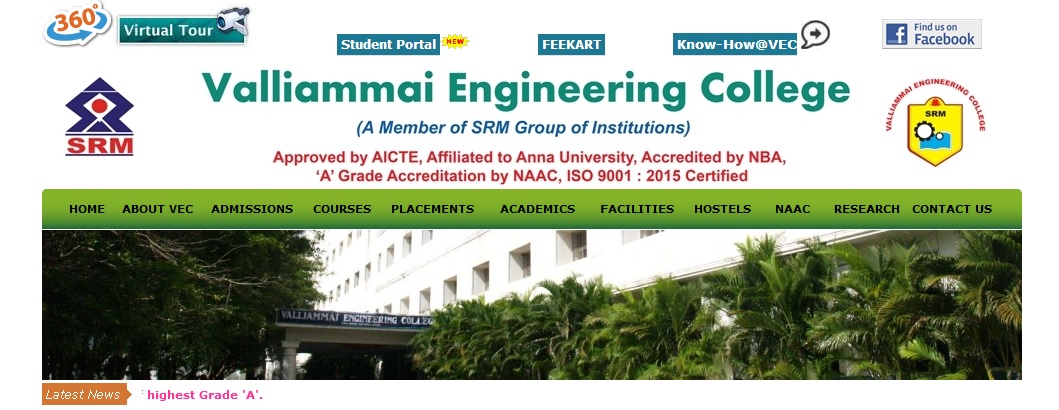CS2302 Computer Networks B.E Question Bank : valliammai.co.in
Name of the College : Valliammai Engineering College
University : Anna University
Department : Information Technology
Subject Code/Name : CS2302- Computer Networks
Degree : B.Tech – IT
Year : III
Semester : V
Document Type : Question Bank
Website : valliammai.co.in
Download :https://www.pdfquestion.in/uploads/va…20Networks.pdf
Valliammai Computer Networks Question Paper
UNIT-I
Part-A :
1. What are the two types of line configuration?
2. List the different network topologies?
3. List out the steps followed in checksum checker?
Related : Valliammai Engineering College CS2304 System Software M.E Question Bank : www.pdfquestion.in/2856.html
4. What do you mean by error control?
5. What are the major duties of Network layer?
6. What are the two different types of error in data transmission?
7. Define flow control?
8. What is redundancy?
9. Write short notes on error correction?
10. Mention the types of error correcting methods.
11. Define checksum.
12. Write short notes on CRC checker.
13. Write short notes on LRC.
14. List out the available detection methods.
15. Mention the types of errors and define the terms?

16. What is the use of Two Dimensional parity in error detection?
17. What are the ways to address the framing problem?
18. What are the responsibilities of data link layer?
19. What are the functions of Application layer?
20. Define Bit stuffing.
Part B (16 Marks) :
1. With a neat diagram explain in detail about the Network architecture.
2. Discuss in detail about HDLC. .
3. Discuss in detail about the layers of OSI model.
4. Discuss about the links operated on the physical media in detail. .
5. Explain the different approaches of framing in detail. .
6. Explain in detail the error detection and error corrections.
7. Discuss in detail about SONET.
9. Write the Sliding Window Algorithm and explain it in detail.
10. Compare Stop and Wait ARQ scheme with sliding window ARQ scheme.
11. Write in detail about the flow control mechanisms.
UNIT-II
Part-A :
1. What is CSMA?
2. Explain CSMA/CD.
3. Mention some of the physical properties of Ethernet.
4. What is the role of VCI?
5. What do you mean by error control?
6. What are the functions of bridges?
7. Differentiate fast Ethernet and gigabit Ethernet.
8. What is the advantage of FDDI over a basic token ring?
9. Explain Bridge? List any two functions which a bridge cannot perform?
10. What is the difference between switch and bridge?
11. Mention different random access techniques?
12. List the two types of data frames in FDDI
13. What is the purpose of the NAV?
14. Name the four types of S frames.
15. What is the access method used by wireless LANs? 16. Why Ethernet is said to be a I-persistent protocol?
17. What is exponential back off?
18. What is token holding time (THT)?
19. What are the two classes of traffic in FDDI?
20. What is Spanning tree?
21. What are the limitations of bridges?
Part-B (16 Marks) :
1.How CSMA/CA differs from CSMA/CD. Explain in brief
2.Explain in details about the access method and frame format used in Ethernet and token ring.
3.Name the four basic network topologies and explain them giving all the Relevant features.
4.Explain the working of carrier sense multiple access protocol.
5.How does a Token Ring LAN operates? Discuss. that can be used to set up wireless LAN’s
6.Explain the frame format, operation and ring maintenance feature of IEEE 802.5 MAC protocol.
7. Briefly define key requirements and functioning of wireless LANs
8. Describe the FDDI frame format and explain.
9.Discuss the MAC layer functions of IEEE 802.11.
10.Explain in details the types of bridges.
11.List and briefly discuss the two different basic transmission technologies
UNIT-III
PART-A :
1. List the difference between circuit switching and Packet switching.
2. What are the different kinds of Multicast Routing?
3. What are the salient features of IPV6.
4. What is meant by circuit switching?
5. What is multicasting?
6. What is a hostid and netid?
7. How does a netid differ from a network address?
8. What is the purpose of subnetting?
9. What is DHCP.
10. Write the keys for understanding the distance vector routing?
11. What is the function of router?
12. How does a router differ from a bridge?
13. Define ICMP.
14. Why is adaptive routing superior to non adaptive routing?
15. What are the three main elements of distance vector algorithms?
16. What is address resolution?
17. What are the benefits of subnetting a network?
18. What is meant by congestion? 19. Define Routing?
20. What are the features in OSPF?
PART B : (16 marks)
1. Discuss briefly about RIP and OSPF.
2. Explain the distance vector routing algorithm.Mention the limitations of distance vector routing algorithm
3. Explain the link state routing algorithm. Mention the limitations of link state routing algorithm
4. Explain in detail about Address Resolution Protocol.
5. Explain in details about circuit switching and packet switching.
6. Explain in details Datagram approach.
7. Explain in details IP addressing methods.
8. Write notes on Internet Protocol and Routers.
9. Write various aspects of IPV6. What are the new feature and improvements?
10. Explain the following
(i)ICMP
(ii)Inter Domain Routing.
11. What is the significance of subnetting.